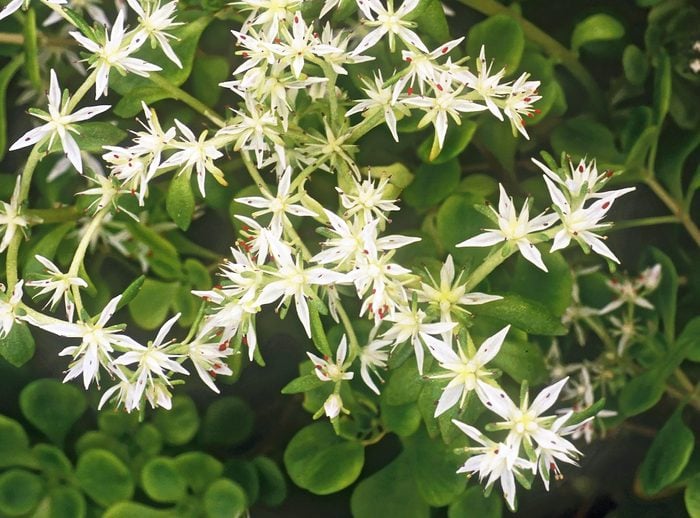
Ground Cover for Shade: Wild Stonecrop
Sedum ternatum
Zones 4 to 8
Whorls of three succulent-like leaves are responsible for this petite perennial sedum’s nickname: three-leaved stonecrop. It tolerates partial shade and is low maintenance once established. Watch for clusters of star-shaped white flowers on these ground cover plants in spring.
Check out the top 10 colorful ground cover flowers for your garden.
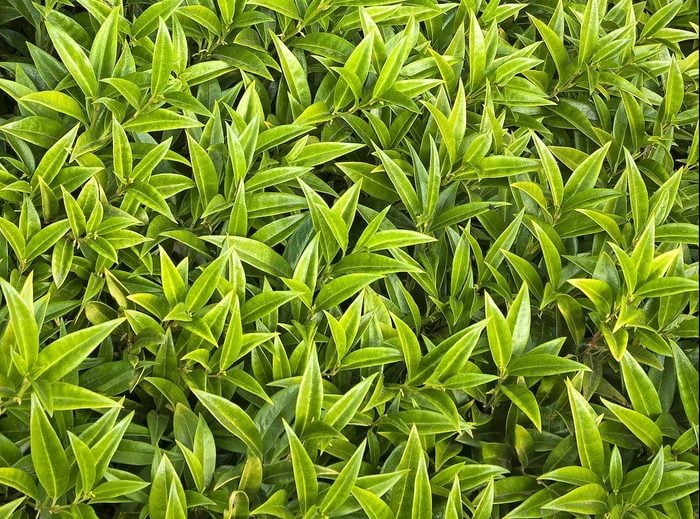
Ground Cover for Shade: Himalayan Sweet Box
Sarcococca hookeriana var. humilis
Zones 6 to 8
The shadier, the better for this broadleaf evergreen. “It offers a way to add a succulent look in lower light conditions,” says Gary. A vigorous spreader that reaches 4 feet wide, it also bears white fragrant blooms in spring that eventually develop into black drupes.
Plant strawberries for a sweet, edible ground cover.
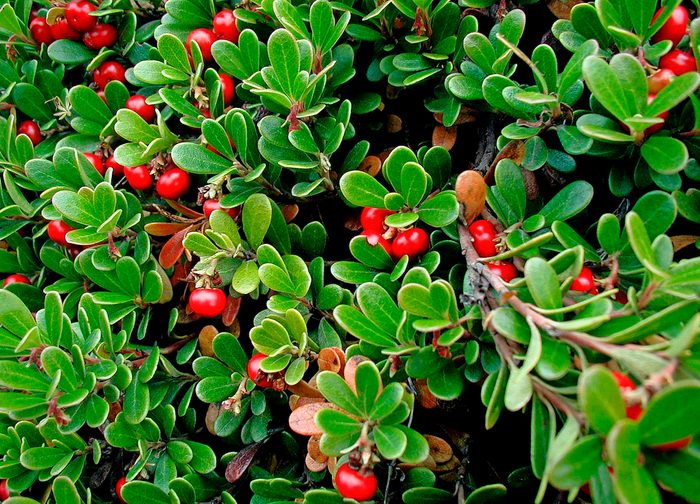
Ground Cover for Shade: Bearberry
Arctostaphylos uva-ursi
Zones 2 to 7
Leaves on this native evergreen perennial change colors with the seasons. Expect chartreuse leaves in spring, dark green in summer and reddish purple in the fall. It only reaches a foot tall, but may spread as much as 15 feet. Small bell-shaped flowers bloom in the spring and are followed by bright red berries in autumn.
Learn how to use vines as ground cover.
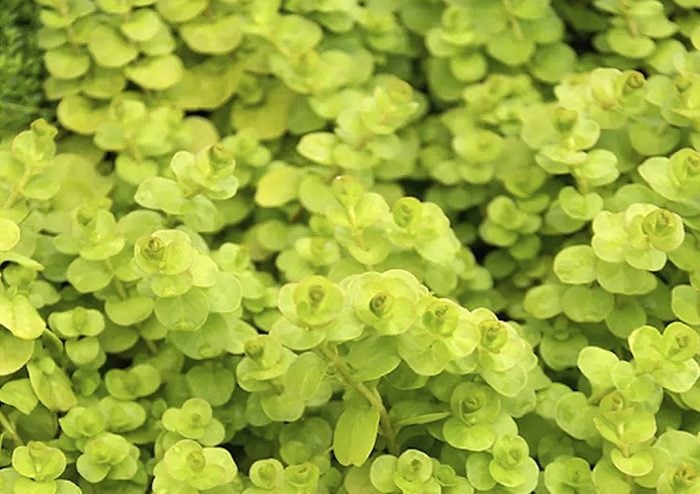
Ground Cover for Shade: Golden Creeping Jenny
Lysimachia nummularia ‘Aurea’
Zones 3 to 9
Create a chartreuse carpet in a shady spot. Gary says the creeping perennial is easy to grow and great for brightening up a dark area. Also known as moneywort, it grows up to 6 inches tall and spreads up to 18 inches wide. Beware: The green-leafed species is invasive in some areas of the United States.
Try these drought-tolerant ground cover plants in dry areas.
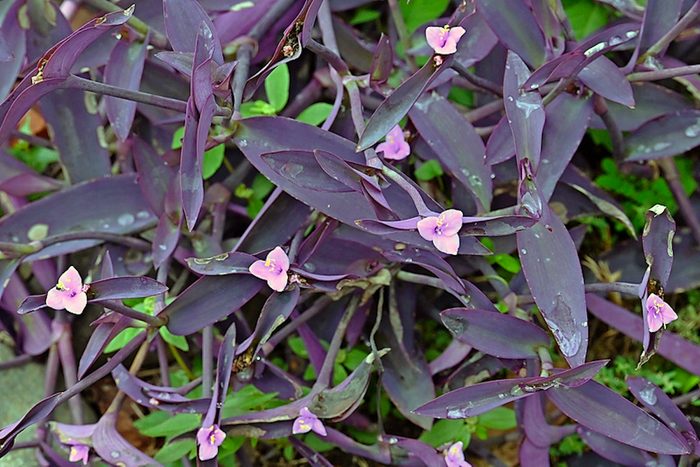
Drought-Tolerant Ground Cover: Purple Heart
Tradescantia pallida
Zones 7 to 11
The distinctive purple foliage and delicate pink flowers make these ground cover plants a standout in the garden. Native to Mexico, the tender perennial pops in a rock garden or border, or as a spiller in a container. Gorgeous trailing purple stems grow up to 2 feet tall and wide.
Don’t miss even more ground covers for shade gardens.
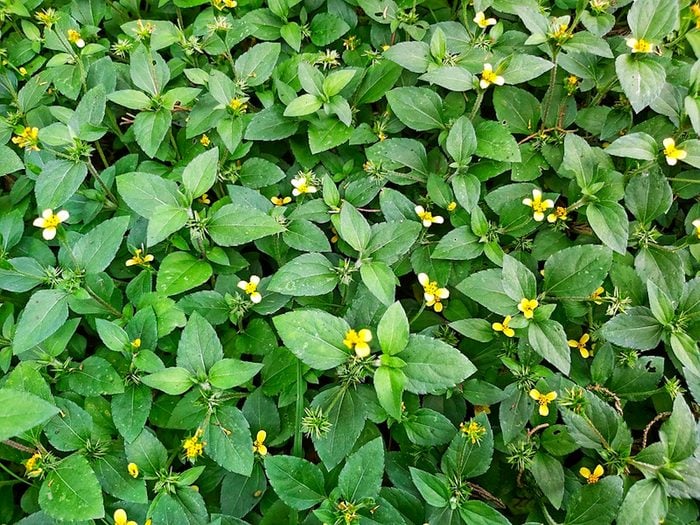
Drought-Tolerant Ground Cover: Straggler Daisy
Calyptocarpus vialis
Zones 7 to 10
This native perennial is not just drought and shade tolerant; it can also handle moderate foot traffic, making it an ideal lawn replacement. Skippers, sulphurs and other small butterflies feast on the petite yellow flowers that bloom from spring well into summer.
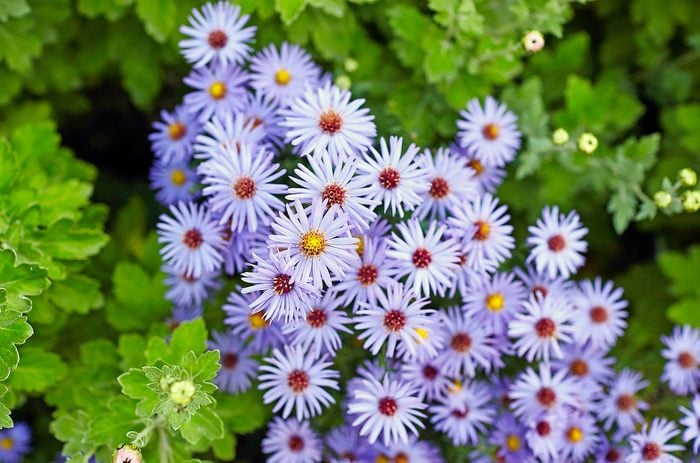
Drought-Tolerant Ground Cover: Aromatic Aster
Symphyotrichum oblongifolium
Zones 3 to 8
Fragrant narrow green leaves earned aromatic aster its name, but it’s a favorite for the clusters of violet flowers that attract birds, butterflies and other pollinators. Aromatic aster is tolerant of drought and poor soils, plus backyard critters generally don’t nibble on these ground cover plants.
Plant sunshine mimosa ground cover instead of grass.
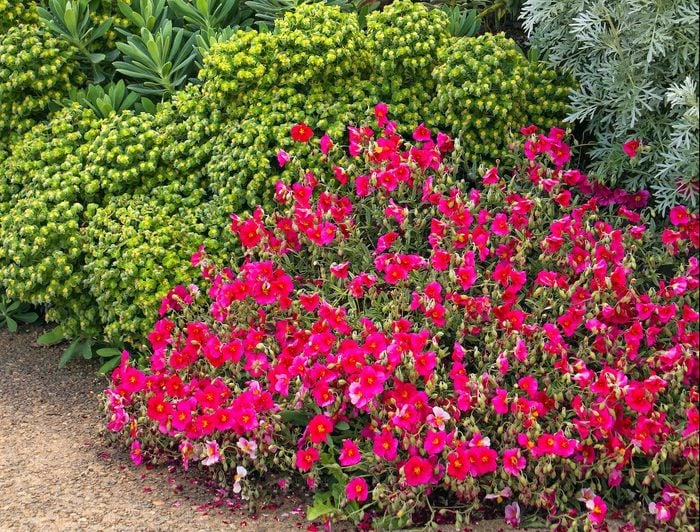
Drought-Tolerant Ground Cover: Rock Rose
Helianthemum nummularium
Zones 5 to 7
In mid-to-late spring, yellow or pink roselike flowers add a beautiful wow factor to arid landscapes. Seasonal blooms can dominate the creeping woody stems, making the gray-green evergreen leaves almost disappear.
Check out the top 10 new garden plants for 2023.
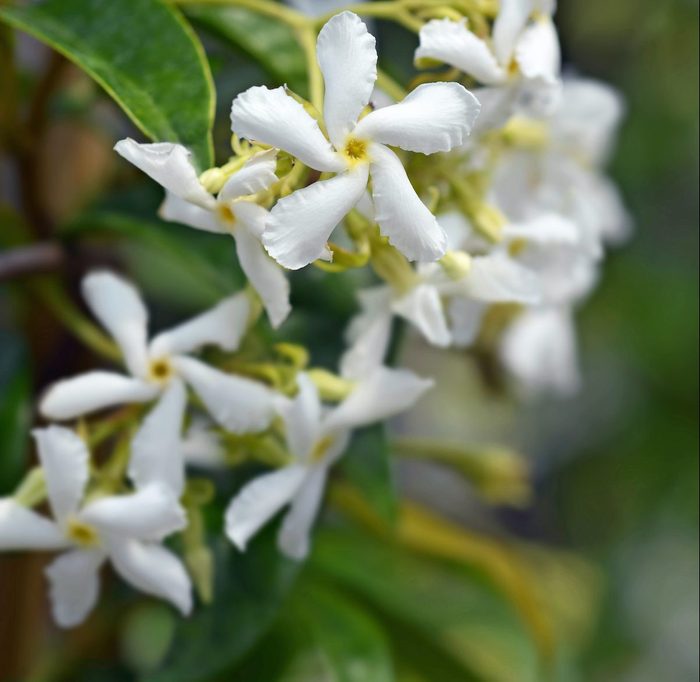
Flowering Ground Cover: Star Jasmine
Trachelospermum jasminoides
Zones 8 to 10
The hallmark white pinwheel flowers have a lush scent. “The dark green glossy evergreen foliage is also beautiful and sets off the flowers to great effect,” Gary says. The flowers provide a feast for bees, too. Plant in part shade for best results.
Check out our favorite fabulous foliage plants for garden pizzazz.
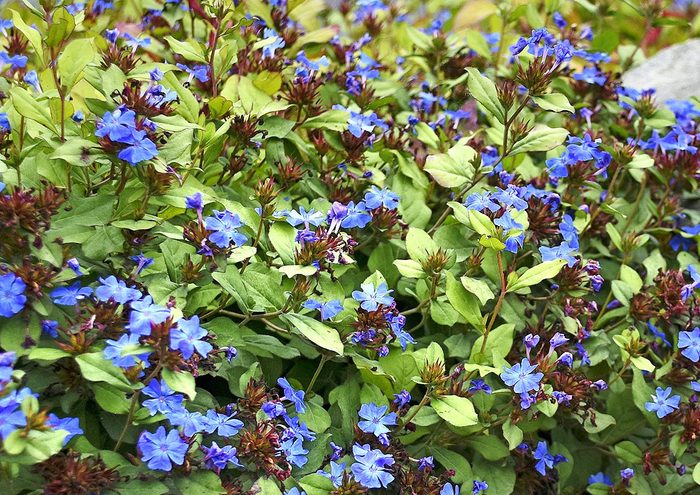
Flowering Ground Cover Plant: Hardy Plumbago
Ceratostigma plumbaginoides
Zones 5 to 9
Dainty blue-purple flowers bloom from summer through early fall. When the flowers fade, the green leaves on the mat-forming perennial turn bronze-red. Plant in full sun to part shade but avoid wet, poorly draining soils. In ideal conditions it can spread quickly, so plant where there’s room to grow.
Grow these edging plants in borders for three seasons of color.
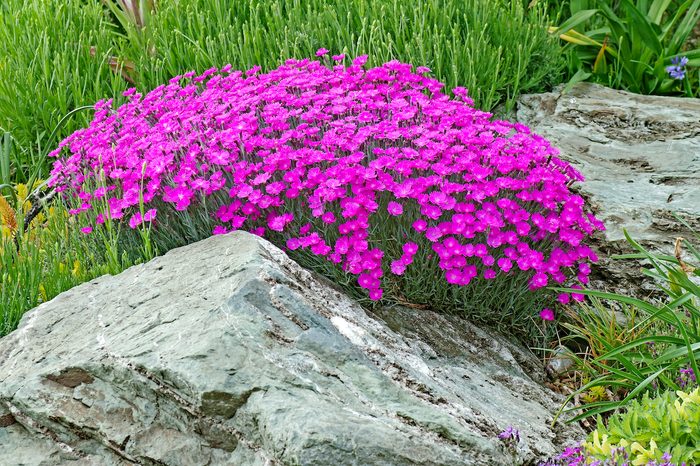
Flowering Ground Cover: Cheddar Pink Dianthus
Dianthus gratianopolitanus
Zones 4 to 8
In spring, a profusion of pink flowers provides a carpet of color with a sweet clovelike scent. The perennial grows best in full sun and makes a good pick for rock gardens and stone walls. Wear gloves when handling this plant—it causes minor skin irritation.
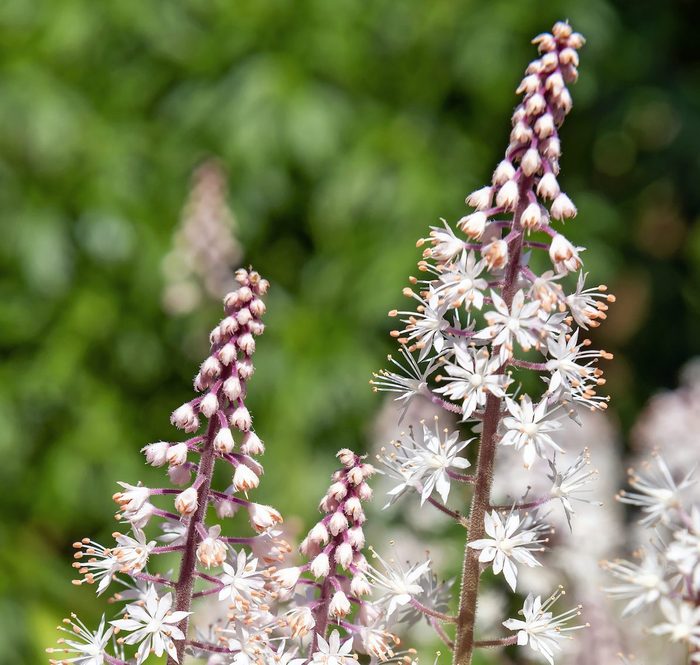
Flowering Ground Cover: Heartleaf Foamflower
Tiarella cordifolia
Zones 3 to 9
These woodland plants produce spikes of white or sometimes pink flowers. “They are related to heucheras, so think of them as coral bells for the shade garden,” Gary says. The vigorous growers form a dense, flowering ground cover. Plant in slightly moist soil for best results—enjoy!
Learn how to grow and care for hostas.
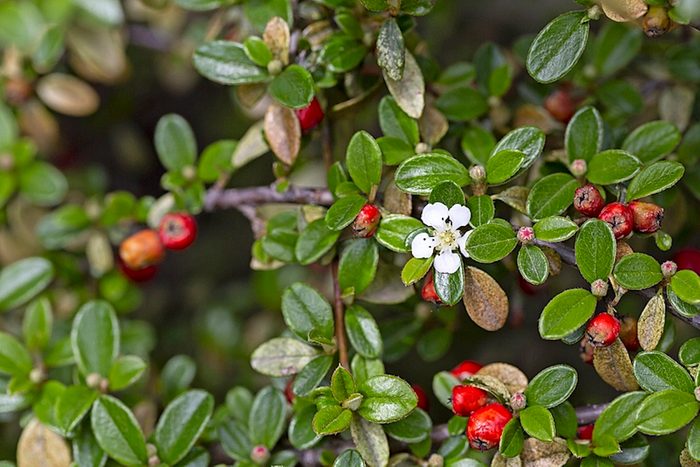
Ground Cover for Slopes: Willowleaf Cotoneaster
Cotoneaster salicifolius
Zones 6 to 8
This fast spreader is ideal for slopes, rock gardens and other spaces that are prone to erosion. After the white blooms that attract bees are spent, bright red berries appear on arching branches and may last through the winter. It’s an evergreen or semi-evergreen ground cover, but the leaves may turn red during unseasonably cold winters.
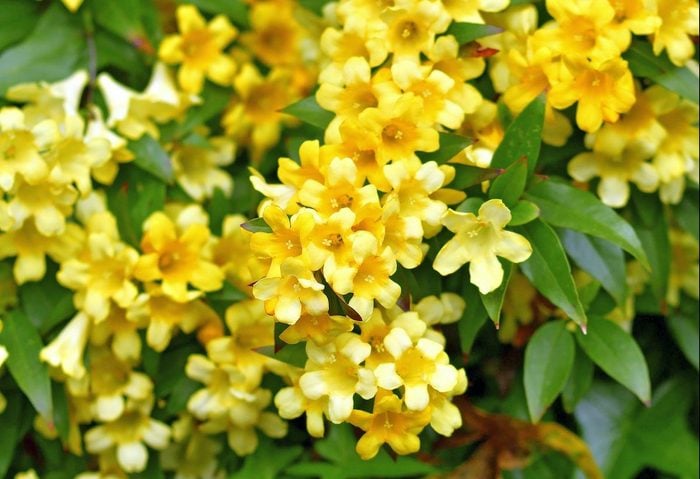
Ground Cover for Slopes: Carolina Yellow Jessamine
Gelsemium sempervirens
Zones 7 to 10
Fragrant yellow flowers that bloom in late winter or early spring are attractive to hummingbirds and other pollinators. The plant puts out runners that can spread up to 20 feet. Support the vines with a vertical trellis if you want more dimension in the garden.
We found easy ways to use vining plants all around your garden.
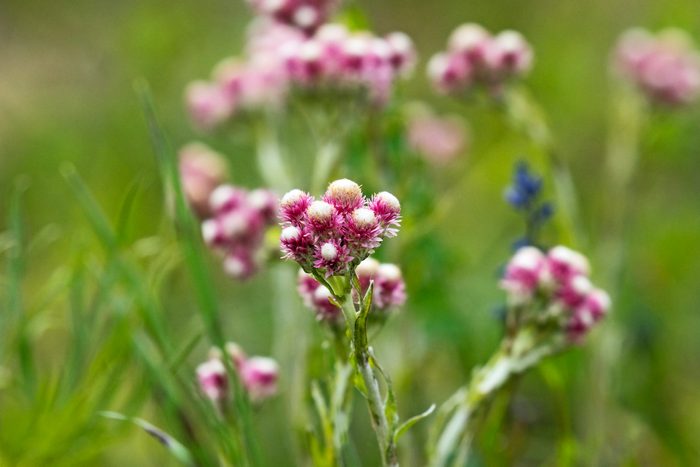
Ground Cover for Slopes: Pussytoes
Antennaria dioica
Zones 3 to 9
This perennial grows 4 to 9 inches tall and forms a dense mat over sandy or rocky soils. The silvery green foliage has woolly white undersides and may be evergreen in some areas. Plant it in a sunny spot with good drainage—it doesn’t tolerate wet feet.
Grow foolproof ferns in your shade garden.
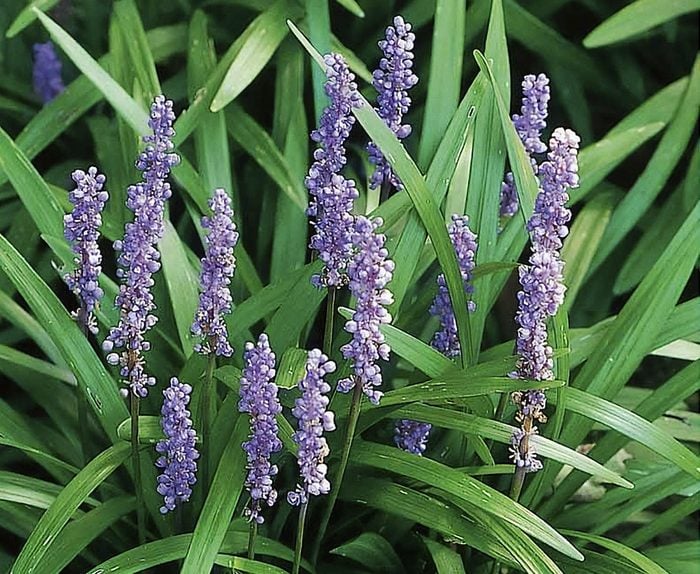
Ground Cover for Slopes: Creeping Liriope
Liriope spicata
Zones 4 to 9
Clumps of narrow, dark green, grasslike leaves and spikes of pale lavender flowers are ideal for natural areas. “It grows in dense rhizomatous colonies that prevent erosion and require little maintenance,” Gary says. Avoid growing these plants for a ground cover in the Southeast, where creeping liriope may be invasive.
Next, check out flowering full sun desert plants to grow.
